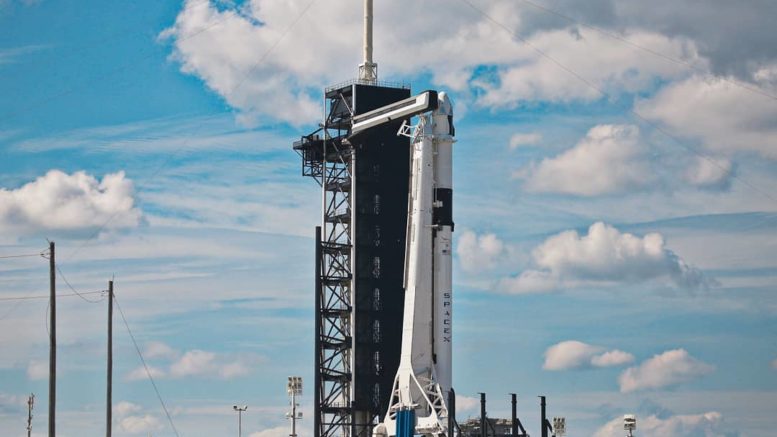As the entire space community knows, NASA is sending astronauts to the ISS for the first time since 2011 from American soil with the mission titled “Launch America”. If the SpaceX launch is successful, there will be several things that will be learned from this experience. We won’t be discussing the potential negatives here in depth, as that is another article; however, we will be discussing the potential positive outcomes that this could mean for the new space economy. Therefore, if done properly or similarly in the future, the success of this mission could help benefit the entire new space community.
Other than providing the certification of the first private space vehicle to launch to send astronauts to the ISS, this success not only shows that private industry can succeed, but thrive. When there is a market, this shows that there are available private sector options that can do the work that otherwise had been the domain of NASA and governments. Moreover, this means that the confidence in the private sector will increase as there was a time that SpaceX was still untested, but as they have grown, they have become more successful. This success has shown that when done properly, the private industry can grow, which should increase investment in existing and new companies in the space economy.
Several benefits of utilizing private new space industry is that if done properly, the private companies can provide proven technologies on par of or better than the public sector at a fraction of the cost, potentially even faster, and that can meet or exceed the safety standards of NASA to exceed NASA programs. Yes, it is worth noting that the initial investment by NASA of more than “$6.6. billion on the Commercial Crew Program over the last decade”[2] is not just an investment in this specific mission, but rather an investment in stimulating the new space economy. There is no way that either SpaceX or Boeing would have made it to the point it is a today without the help of NASA. The benefits of this decades long investment is because the infrastructure to make products such as flights to the ISS cheaper, safer, and faster.
In regards to speed, SpaceX has shown that they can launch, refurbish, and successfully relaunch their boosters multiple times and with only a few months time between booster uses. Although greater demand might make it harder for SpaceX to refurbish these rockets, as their business grows, the company would scale and innovate to keep the process as efficient as possible. Using the same Falcon 9 technology that has been the workhorse of their business, SpaceX knows how to reuse their technology safely if they can safely land the boosters. With the Space Shuttle, it could take around 3 months to refurbish a space shuttle before it were ready for use again when the Space Shuttle Program was running at its peak.[3] Although it has taken SpaceX 4-5 months to refurbish existing rockets, Elon Musk has said that the goal is to make the turn around time faster, up to 24 hours. If SpaceX is able to get close to that goal of a 24 hour turnaround for a single launch vehicle, it could not only reduce costs, but provide more opportunities to launch.
In terms of safety, if NASA is able to continue to provide companies such as SpaceX strict guidelines for safety and testing in future endeavors that allow for such to occur, NASA can help make space safer. Just as the Crewed Dragon and Starliner safety requirements were extremely strict and in some cases stricter than even NASA had in their later space shuttle missions, these requirements can help keep the brands and people safe. The last thing that everyone wants is an issue with a launch!
In terms of cost, if done properly such as NASA has done with SpaceX by being an investor in the SpaceX development program, rather than the procurer, can make the launch of the private industry cheaper on a per launch basis. Building the infrastructure is always costly, but after a vendor is found that can commercialize and create their product, there is the potential for cheaper launches. This can be seen as hitching a ride with RosCosMos costs around $75 million per astronaut; however, the cost of SpaceX and Boeing can put the launch price at around $55 million. and $90 million a piece.[4] Although it would be cheaper to go with RosCosMos than it is Boeing, having commercial options in the US would be a better option than paying the Russians.
Sources And Further Reading
[1] = https://www.independent.co.uk/news/world/americas/nasa-spacex-human-space-flight-douglas-loverro-elon-musk-artemis-moon-a9525171.html
[2] = https://www.planetary.org/blogs/casey-dreier/2020/nasas-commercial-crew-is-a-great-deal-for-the-agency.html
[3] = https://www.nasa.gov/mission_pages/shuttle/shuttlemissions/sts121/launch/qa-leinbach.html
[4] = https://www.space.com/spacex-boeing-commercial-crew-seat-prices.html

Every time I read one of your posts, I come away with something new and interesting to think about. Thanks for consistently putting out such great content!